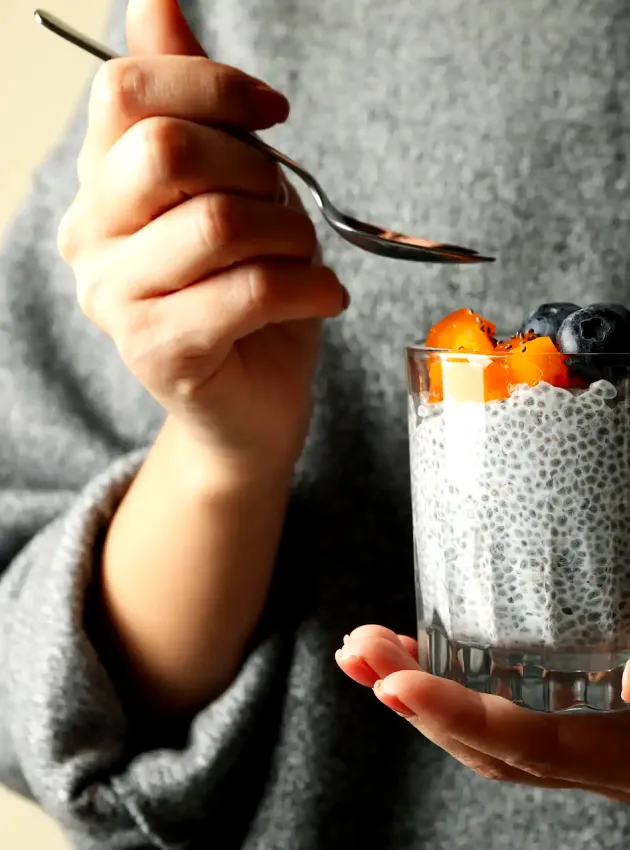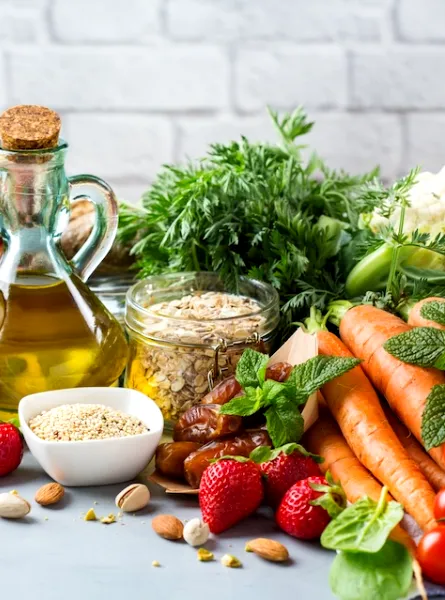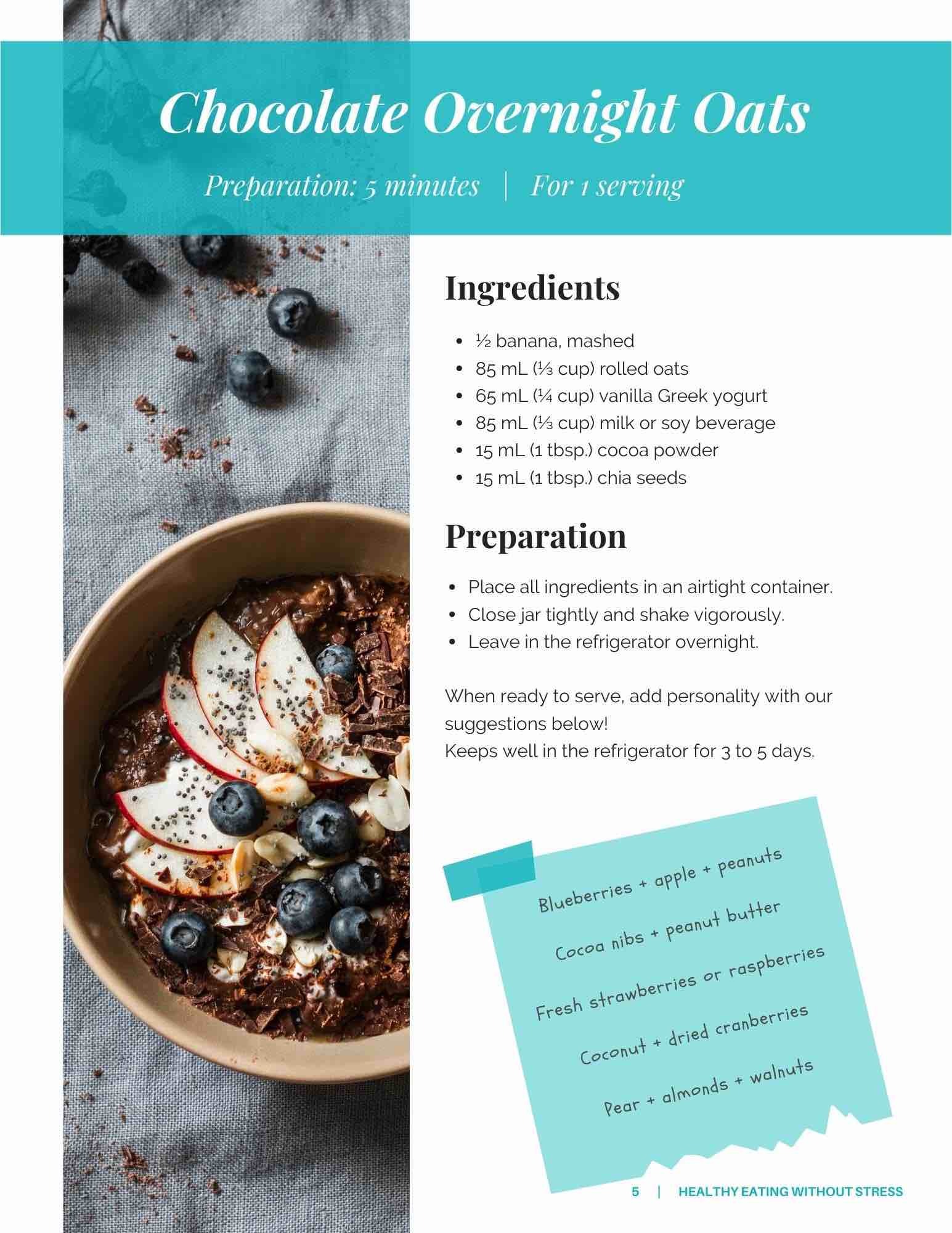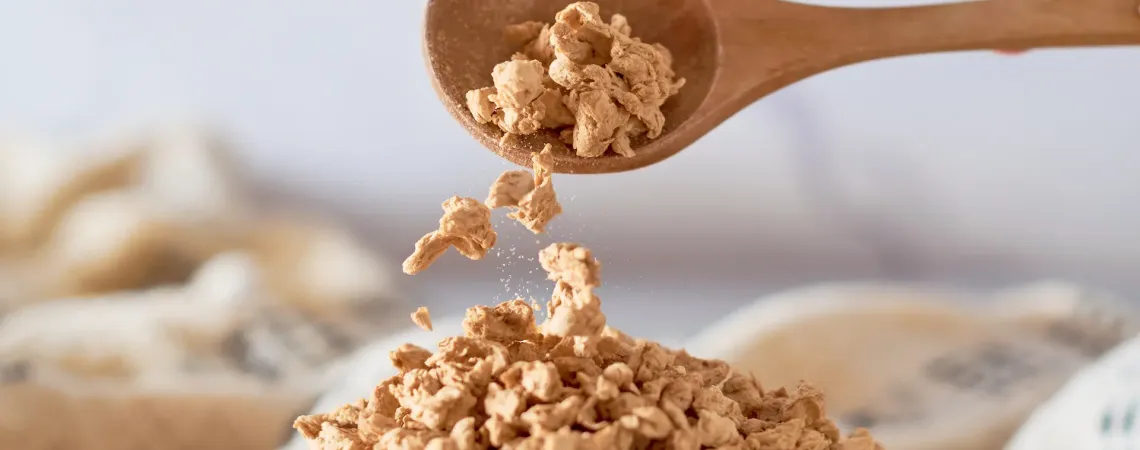
In This Article
Looking to cut back on your meat consumption without sacrificing flavour or protein? Textured Vegetable Protein (TVP) could become your new best friend in the kitchen! Versatile, affordable, and easy to use, it’s gaining popularity in Canadian kitchens. Here’s everything you need to know about this still too-often overlooked ingredient.
1. What Is TVP?
Textured Vegetable Protein (TVP) is a soy-based ingredient often used as a substitute for ground meat. It’s high in protein, budget-friendly, easy to cook, and absorbs flavours beautifully. TVP comes in the form of small, dry pieces that take on a tender, chewy texture once rehydrated.
How Is It Made?
TVP is made from defatted soy flour: the oil is removed from the soybeans, and the resulting protein-rich flour is heated and pressed at high temperatures (extrusion), which creates its unique, fibrous texture.
TVP, Tofu, and Tempeh: What’s the Difference?

Here’s how TVP compares to tofu and tempeh, two other popular plant-based protein sources.
|
Characteristics |
Tofu |
Tempeh |
TVP |
|---|---|---|---|
|
Main Ingredient |
Soy milk |
Whole soybeans |
Defatted soy flour |
|
Manufacturing Process |
Soy milk coagulation |
Fermentation |
Extrusion (heated and pressed at high temperature) |
|
Texture |
Firm to silken, depending on type |
Firm and crumbly |
Fibrous, similar to ground meat |
|
Taste |
Mild soy flavour |
Stronger, slightly nutty taste |
Neutral, absorbs flavours well |
|
Storage |
Moderate, refrigerated |
Moderate, refrigerated |
Very long, at room temperature |
TVP stands out for its ground-meat-like texture, its ability to soak up flavours, and its long shelf life when dry.
2. Is TVP Healthy?
Yes. Textured Vegetable Protein (TVP) is an excellent healthy choice, especially for those wanting to reduce their meat intake without compromising on nutrition.
A Complete Protein Source
- Provides 14 to 18 g of protein per 1/2 cup rehydrated serving — just as much as a portion of meat or three eggs.
- Contains all essential amino acids, just like tofu or tempeh.
- Low in fat, cholesterol free: a heart-healthy choice.
Other Important Nutrients
- Natural source of iron, calcium, magnesium, and potassium.
- Some versions are fortified with vitamin B12, which is useful for people following a vegetarian or vegan diet.
- Naturally gluten free, unless seasoned with wheat-containing ingredients.
3. When Is TVP Especially Useful?
Thanks to its nutritional profile, TVP is suitable for both balanced diets and for adapting to special needs or medical conditions.
Weight Loss
- Low in calories, but very filling
- Allows you to reduce your calorie intake without having to cut portion sizes
- Helps maintain muscle mass during a calorie deficit
Dyslipidemia (DLP)
- Helps reduce saturated fat and dietary cholesterol intake
- Can improve LDL (bad cholesterol) and triglyceride levels
- Contains plant fibre that can reduce cholesterol absorption in the gut.
- An ideal plant-based alternative to support heart health
Fatty Liver Disease
- Allows you to replace animal proteins high in fat
- Fits well in a lighter, balanced, and lower-fat diet
- Helps reduce fat accumulation in the liver
4. Is TVP an Ultra-Processed Food?
No. Even though it is processed, TVP is not considered an ultra-processed food.
A Simple Ingredient List
- Usually made from just one ingredient: defatted soy.
- No additives or preservatives in its basic form.
- Some varieties are seasoned, fortified, or coloured.
- For example, some brands add caramel colouring to give TVP a shade closer to ground meat. This is why it’s important to read the ingredient list before buying.
5. How to Use TVP?
Do I Need to Soak It Before Cooking?
Yes! Simply cover it with hot water, broth, or a flavourful marinade for 5 to 10 minutes. Use about twice as much liquid as dry TVP (e.g., 1 cup of liquid for ½ cup of TVP). It will absorb most of the liquid and become tender.
To replace 1 lb (454 g) of ground meat in a recipe, use about 1¾ cups of dry TVP with 2 cups of liquid. Drain any excess if needed after rehydrating.
How Do I Add Flavour?
Because TVP is neutral, it easily takes on the flavours of surrounding ingredients. Add spices, herbs, or sauces during the rehydration process for more flavour from the very first bite.
What Dishes Can I Use It In?
Thanks to its texture and neutral taste, TVP is a super versatile kitchen ingredient. It works in all kinds of recipes, whether they’re 100% vegetarian, or blended with ground meat, to gradually reduce your meat intake without sacrificing taste or texture.
Here are some protein-rich recipe ideas you can easily make at home:
Main Dishes and Savoury Recipes
- Veggie Lasagna Soup: a comforting dish where TVP is the perfect meat replacement.
- Veggie Burgers: add TVP to your homemade patties for more structure and protein.
- Veggie Cretons: make a meat-free version with TVP, or mix it with a bit of meat for an easier transition.
- Chili: make a 100% plant-based chili or try a mix of 50% ground meat and 50% TVP for a version with less saturated fat but just as much flavour.
- Tacos or Spaghetti Sauce: use TVP alone or mixed with ground meat for great texture and a solid protein boost.
Snacks and Sweet Recipes
- Protein Muffins: add a bit of TVP for a nourishing snack.
- Protein Carrot Cake: surprising, but delicious! Perfect for a dessert that keeps you going.
- Protein Granola: crunchy and filling, perfect for adding plant-based protein to your breakfasts or snacks.
No matter the recipe, TVP is easy to add for extra protein, less fat, and more variety in your diet.
Can I Freeze Dishes Made With TVP?
Yes, absolutely! Meals made with TVP freeze very well. It’s a great option for meal planning or stocking your freezer for busy nights.
6. Main Formats and Uses of TVP
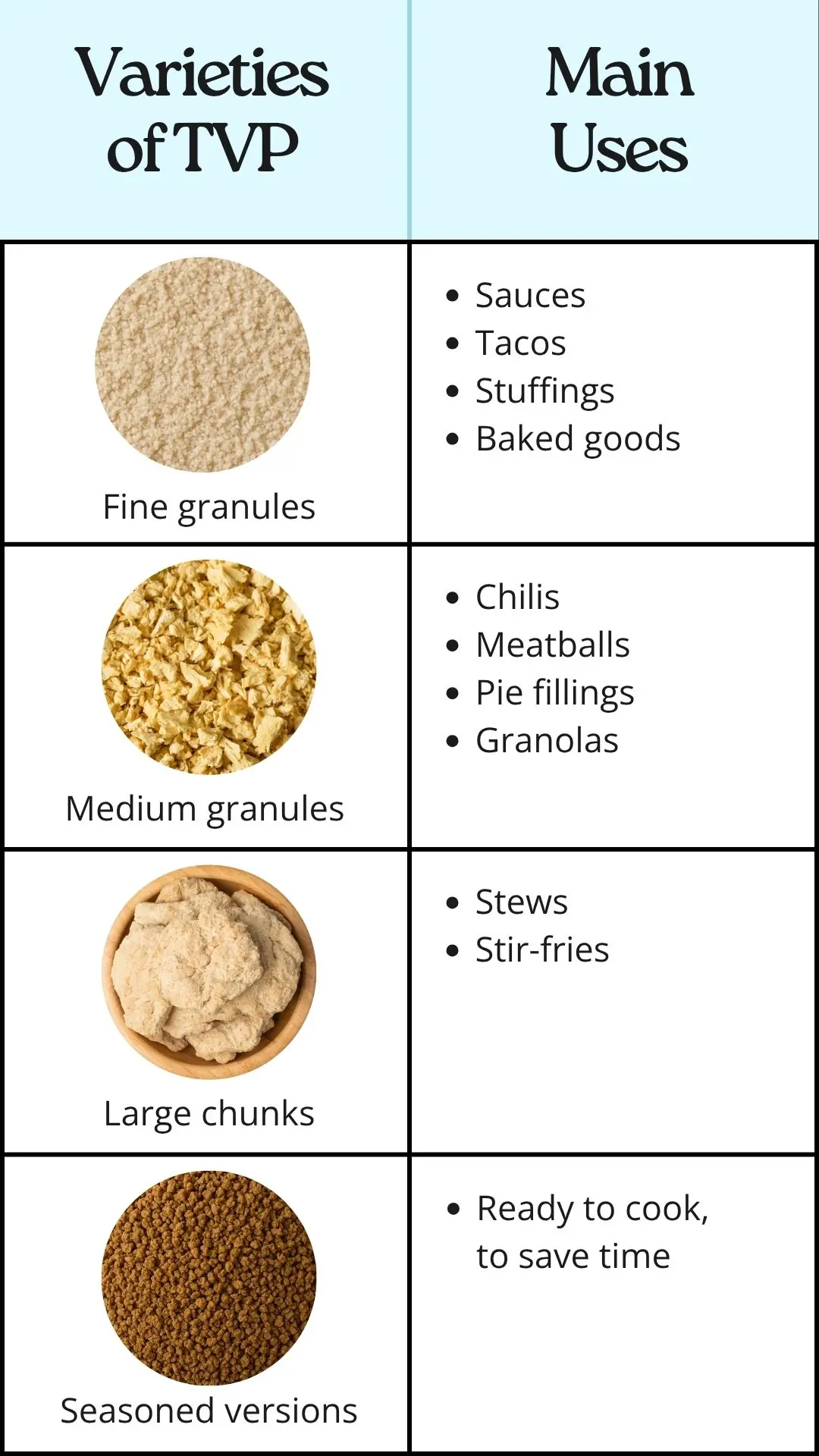
Storage After Rehydration
Refrigerator → 4 to 5 days
Freezer → Up to 3 months
7. Environmental Impact and Ethical Values
Soy production for human consumption has a much lower environmental footprint than animal farming. It uses less water, generates fewer greenhouse gases, and allows for more sustainable eating. TVP is therefore an excellent choice for vegetarians, vegans, or anyone looking to lower their impact and eat more plant-based meals.
8. TVP: An Ingredient to Discover, A Healthy Habit to Adopt
Easy to incorporate, affordable, and nutritious, TVP is an excellent way to diversify your diet, reduce your meat intake, and move toward a more sustainable lifestyle. By trying it in your favourite recipes, you’ll see that it naturally fits into your routine.
For advice tailored to your needs on how to incorporate TVP into your diet or to plan balanced meals, book an appointment with one of our registered dietitians today!




